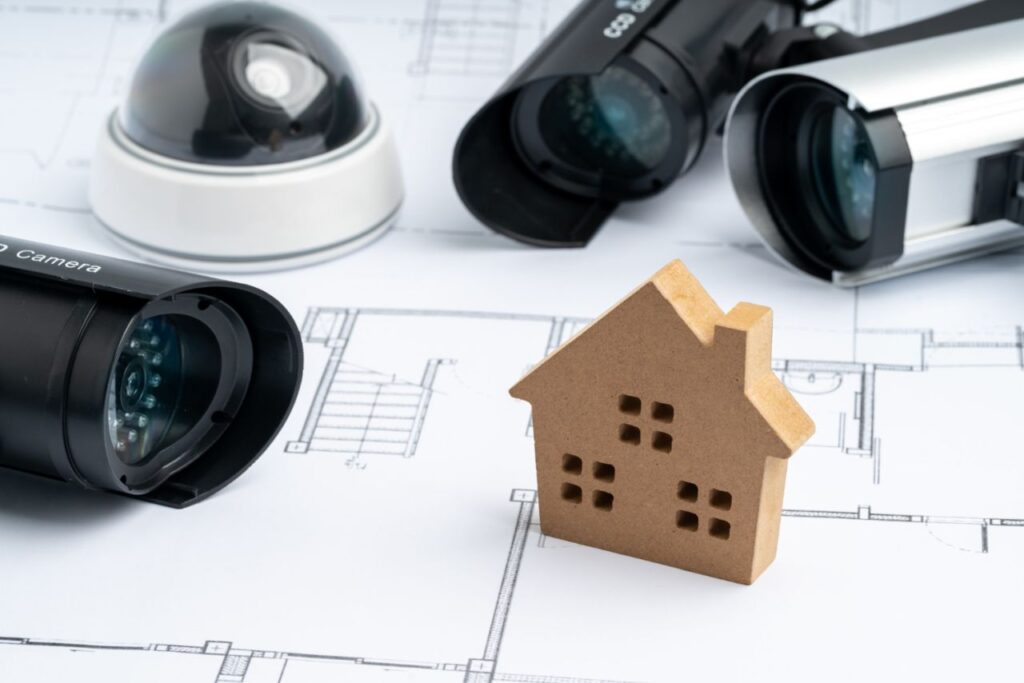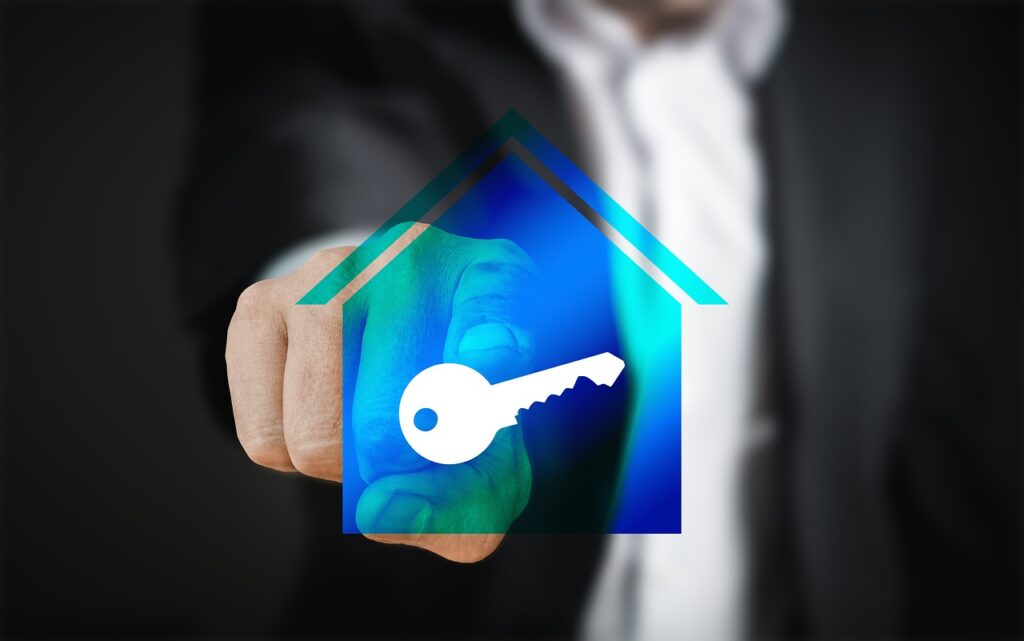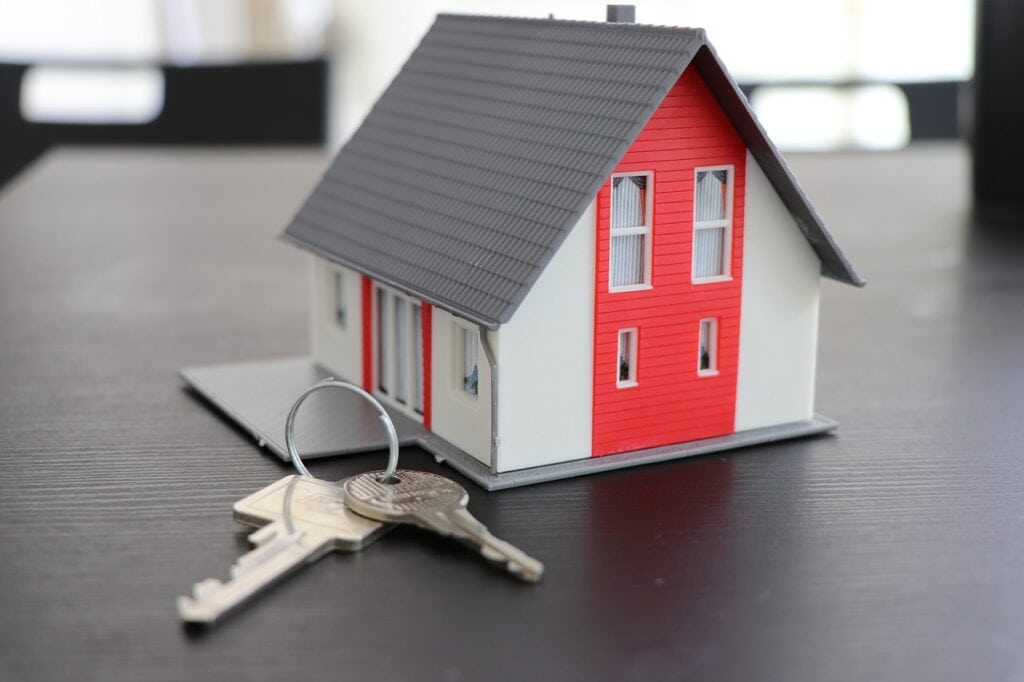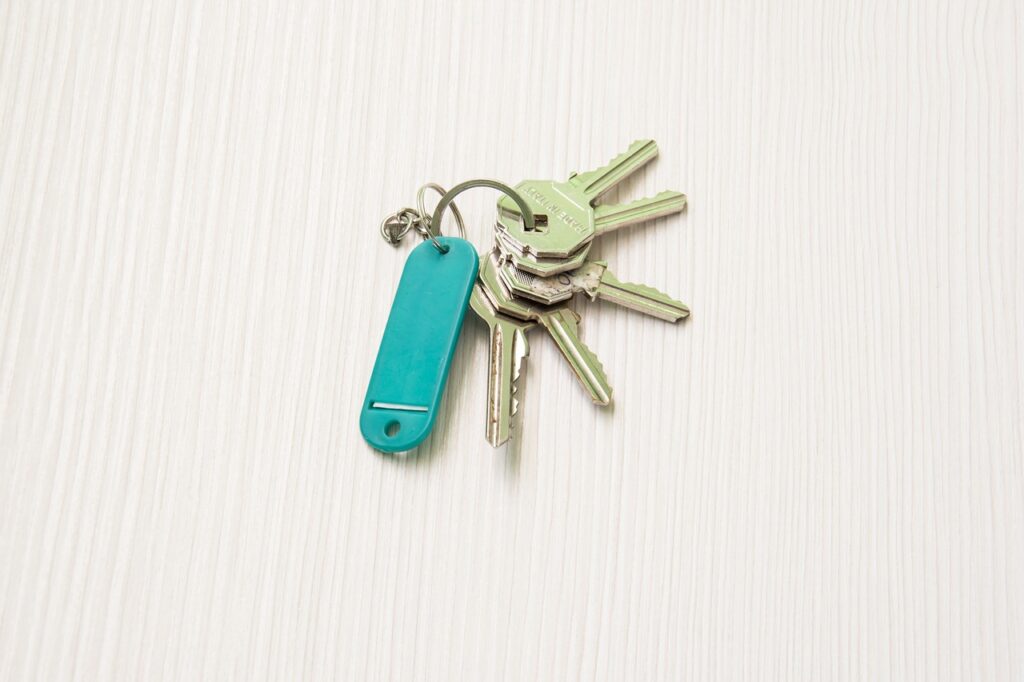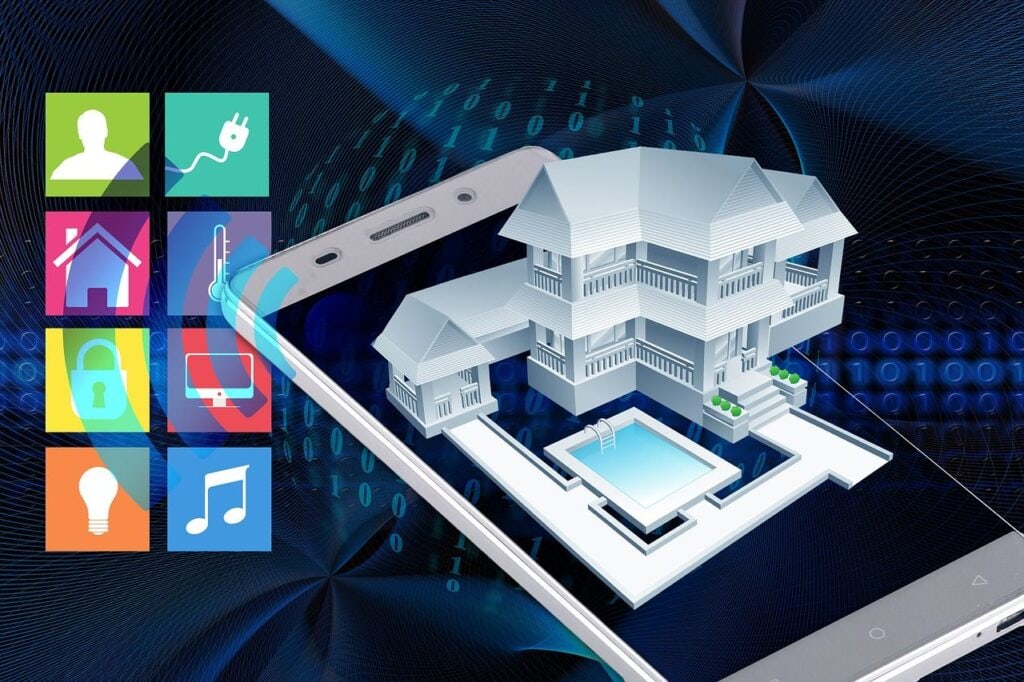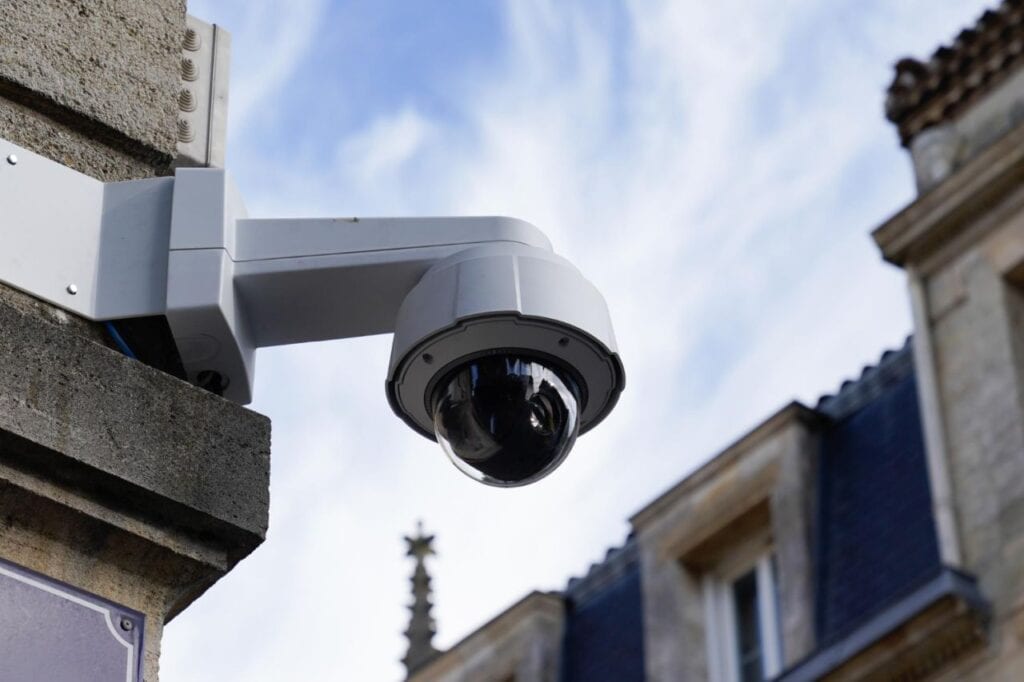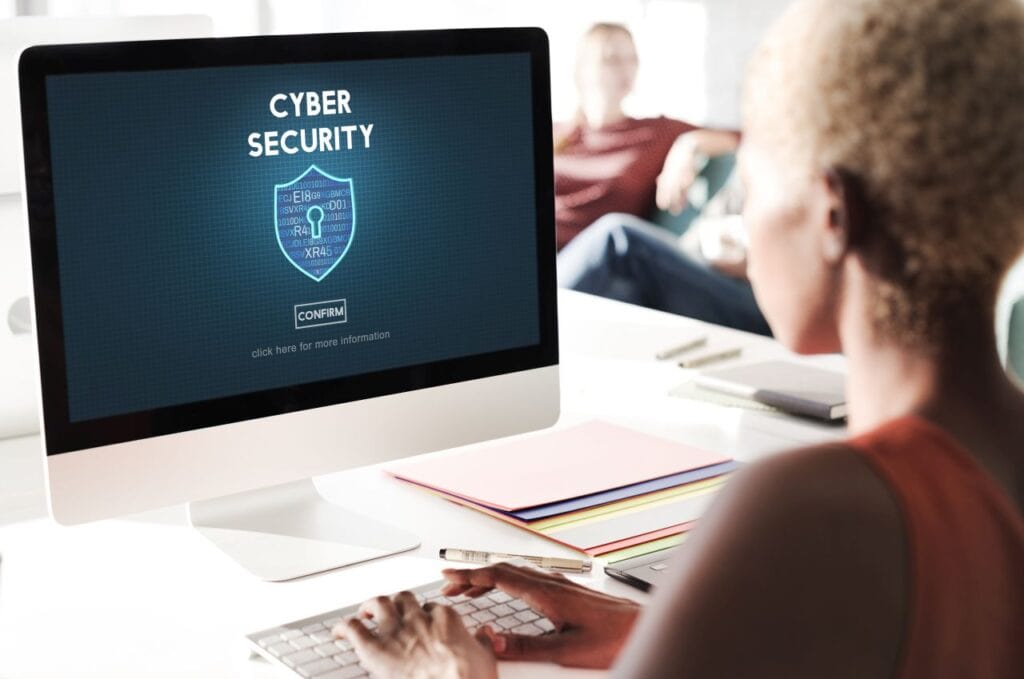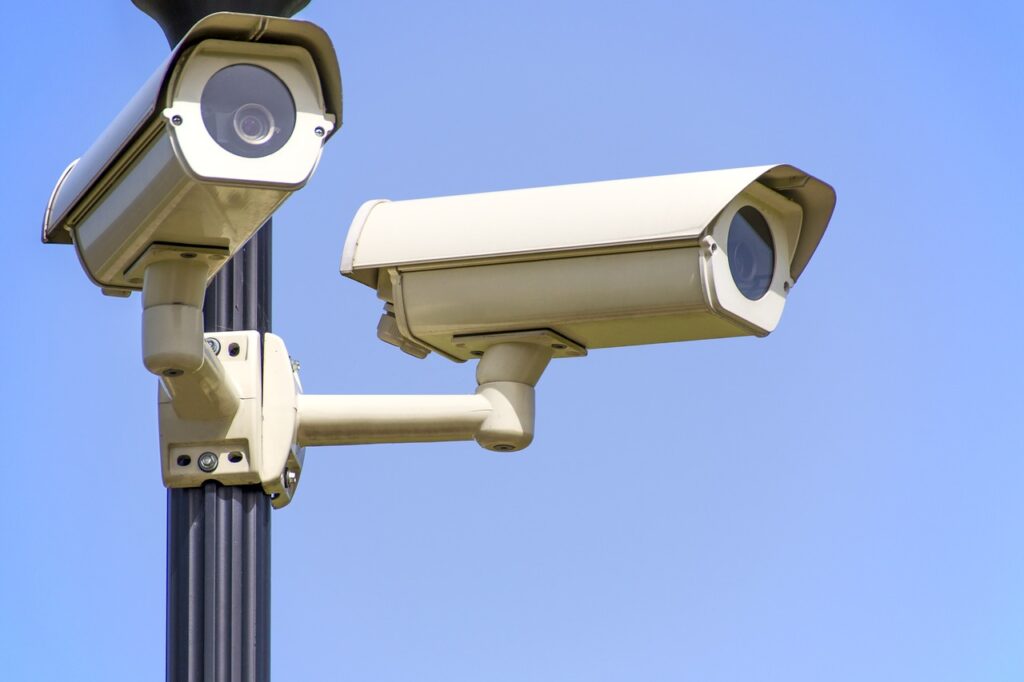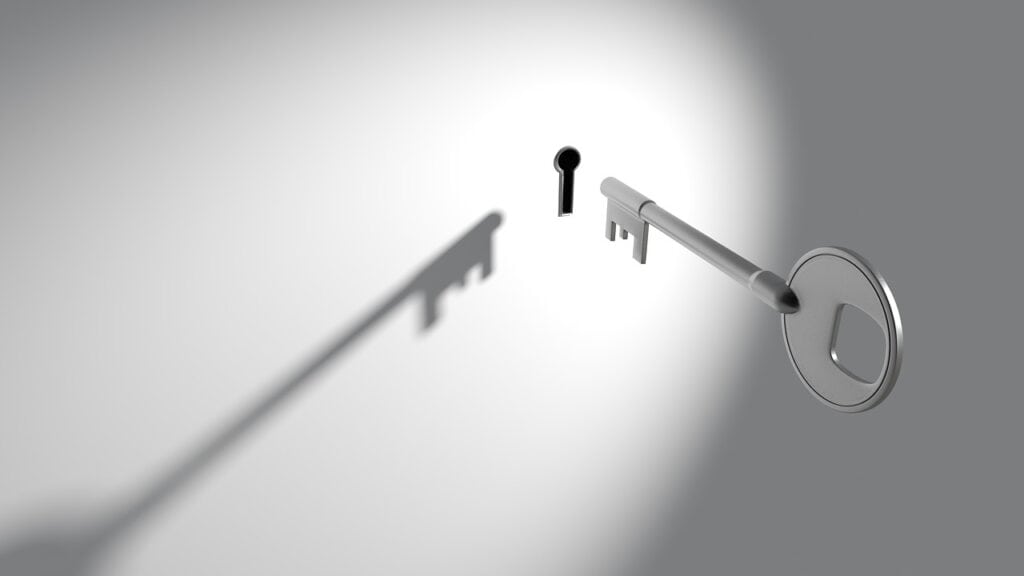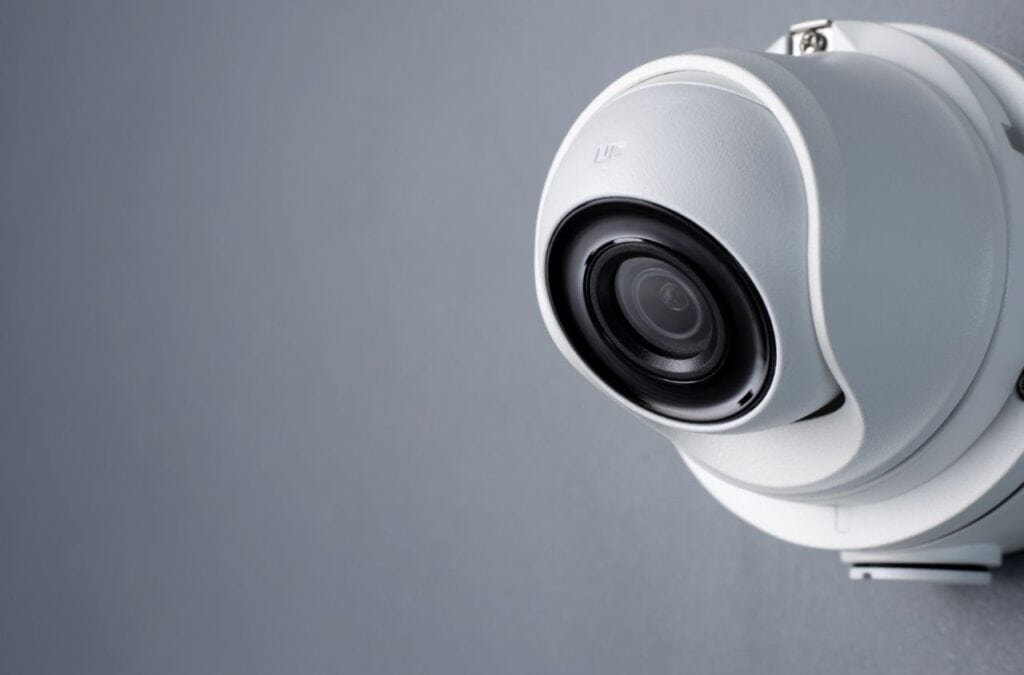Together, the hardware and software in a smart home security system help keep your home safe from intruders. The primary goal of home security systems is to protect residents from harm caused by intruders, fires, natural disasters, and other threats like carbon monoxide poisoning. In today's world, a security system is not complete without the usual array of smoke alarms, motion detectors, door/window sensors, and cameras.
Thanks to IoT, "smart" home gadget installation is simpler than ever, such as those that allow you to remotely manage your home's locks, lights, thermostat, vacuum, lawnmower, and even pet feeder from your accompanying app or smartphone. On top of that, it has made it simple and cheap to keep an eye on your house from anywhere on the planet. Nowadays, high-tech home security systems allow for a great deal of customization and come in a variety of forms, from do-it-yourself (DIY) kits to full-blown setups with professional monitoring and installation.
You can choose a self-monitored system or pay a monthly fee to have experts monitor your home around the clock and contact emergency services (such as the fire department or police) if the alarms go off. Whatever option you go with should be carefully considered in light of your specific needs. The on-demand monitoring services can be used at any time, including while you are on vacation. The premiums will increase, however, in proportion to the extent to which your policy covers.
Let's pretend you're not quite ready to spend the money on a reliable security system just yet. If this is the case, there is a wide selection of standalone gadgets available, such as outdoor and indoor security cameras, smart locks, video doorbells, and motion sensors that can be set up to allow you to keep tabs on your home from the palm of your hand. When trying to decide how and where to maintain your home monitored and secure while you're away, the following data is essential to have on hand.
Frequently Asked Questions
A security alarm is designed to detect intrusion, such as unauthorised entry, into a building or other areas such as a home or school. Some alarm systems serve a single purpose of burglary protection; combination systems provide fire and intrusion protection.
Most of the work that a security service does is to make sure things stay safe and uneventful during day-to-day business. The kind of monitoring they do largely depends on the policies set out by management, but security guards are usually responsible for knowing who is in the building.
There are three primary areas or classifications of security controls. These include management security, operational security, and physical security controls.
There are three main types of security officers working for private and public businesses and individuals: government, in-house, and contractually for private security firms. In addition, there are even more options within those three main types – armed and unarmed, plainclothes or uniformed, on-site or remote.
Essentially, a smoke detector is a device that senses when there's smoke around. ... The smoke detector triggers a fire alarm to alert residents to a potential fire. The smoke detector will sense the smoke and may or may not make noise when it does.
Simplifying Safety And Automation In The Home
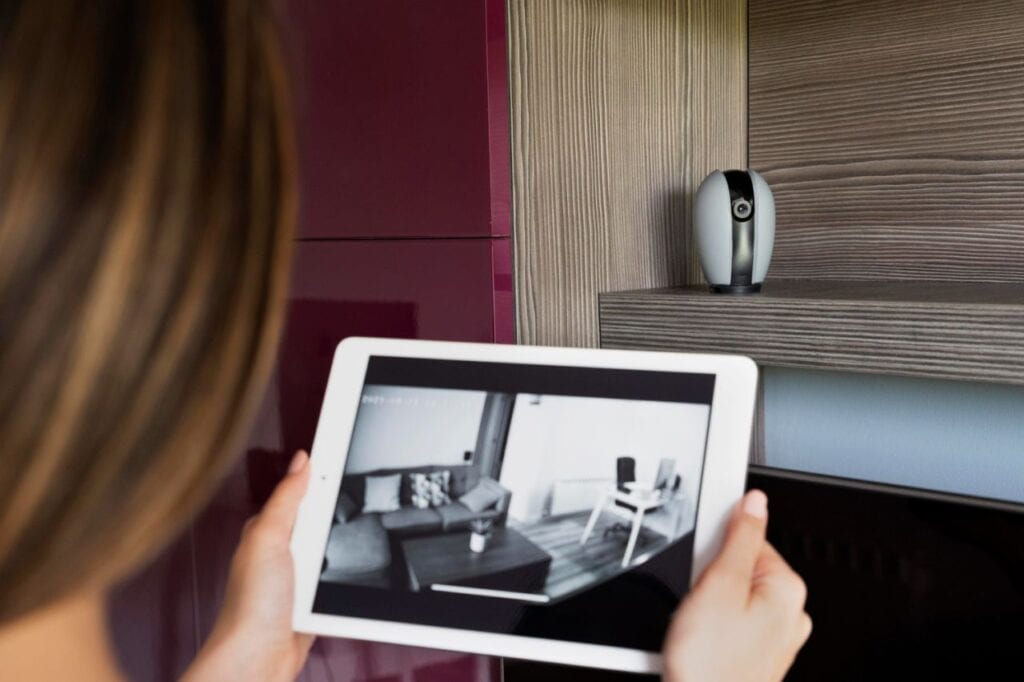
The security devices in your home can be monitored and controlled from anywhere in the world via an app on your smartphone if you have a smart home security system that connects to your Wi-Fi network. Standard entry-level security systems include a motion detector, a few door/window sensors, and a hub that talks to the other devices over Zigbee, WiFi, Z-Wave or a private mesh network. The various parts of the security system are able to share information with one another thanks to these protocols. You can cover your entire house by adding an extra window, door and motion sensor. In addition, you can set up a full system that incorporates things like outdoor and indoor surveillance cameras, door locks, water sensors, garage door openers, lights, sirens, smoke/CO detectors and more.
Before we go any further, a word about wireless protocols: Everything in a home security system should ideally talk to the central hub using the same wireless standard. The power needed, the signal range, the cost, and the size all play a role, making it difficult to choose just one.
For instance, Z-Wave or Zigbee technology is commonly used for smaller components like door/window sensors because it does not require a lot of power and can be powered by batteries of a lower capacity. Plus, they work in a mesh topology and can help expand the types of devices that can be linked together in a network. Neither protocol, however, offers the bandwidth that Wi-Fi does, which is why it is so commonly used in security cameras to facilitate lag-free video streaming and other applications that necessitate a sizable data transfer rate. These days, most smartphones also come equipped with Wi-Fi. Moreover, Z-Wave and Zigbee devices require a hub in order to communicate with one another and be managed, whereas Wi-Fi devices can connect directly to a home network and be managed via an app. Finally, Z-Wave and Zigbee devices provide a greater level of security than Wi-Fi devices because they operate within a closed system with a dedicated hub and make use of AES 128 encryption.
Home Safety And Security With Simplisafe
An effective intelligent security system will provide components that work together in a unified setting and can be controlled by rules tailored to the individual needs of the user. For instance, you can programme rules that activate a camera when a certain sensor is triggered, turn on the lights when motion is detected, or unlock the doors when the smoke alarm sounds. Recorded video can be stored locally on a solid-state drive or SD card by some systems, while others may offer cloud-based storage. DIYers on a tighter budget should consider storing their videos locally, but be wary of accidentally erasing any files they might need in the future. Videos stored on your device's internal memory are a great option.
However, depending on the subscription package, the cost of storing and accessing recorded video in the cloud can add up to several hundred dollars per year. Some systems let you save data in the cloud, while others provide a hard drive specifically for video that can be used for both time-lapse and digital video recording (DVR). In this way, finding a video event that occurred at a specific time is quick and easy.
All the security systems we've tested so far have accompanying apps that turn your phone into a control centre, letting you do things like disarm and arm it, set up ordinance, add and remove components, and get alerts whenever an alarm goes off. In addition to locking and unlocking doors, adjusting the temperature, viewing recorded video and live, and turning off alarms, the vast majority of apps also allow you to do these things.
There are even apps that can use your phone's location services to lock and unlock your doors whenever you enter or leave a certain area. More expensive systems usually include a communications hub mounted on the wall with a touch-screen display that allows you to perform all of the app's functions. Usually, this panel is part of the deal. With the help of the screen, you can talk to a trained monitoring system and watch footage from any security cameras in real time whenever an alarm is triggered.
Do It Yourself Home Safety And Security
Taking care of the security system's installation yourself can save you a lot of money over the long run, both in terms of the initial investment and the cost of regular maintenance and monitoring. Most DIY systems also come in convenient, easy-to-assemble packages that can be adjusted to each individual's needs. Then, whenever it's most convenient for you, you can order additional components and sensors, and the system will be ready to use them within a matter of minutes.
A beginner do-it-yourself system may only have support for up to two wireless systems, and it may only come with a handful of optional extras. Costlier DIY systems, on the other hand, will work with a wide variety of wireless protocols and a wide variety of add-on parts. The cost of these systems will increase as well. Furthermore, some DIY security systems act as their own monitors. This means that in the event of a break-in or fire, you will be alerted when certain devices are activated, but it will be your responsibility to contact the proper authorities. On the other hand, an increasing number of DIY vendors are introducing paid monitoring options.
The Best In Home Security Technology
Professionally monitored systems will first try to contact you via the system's two-way control panel before calling the emergency contact number you've provided in the event of a fire or break-in. If you do not answer, the agent will call 911 and ask for an emergency crew to be sent to your home. If you opt for professional installation, a technician will come to your home, hook everything up, and show you how to use it. It's one of the many reasons why hiring a professional to install the system is preferable to doing it yourself. It's important to be aware that obtaining a permit before having a home security system installed may be necessary in your area.
Amazon Alexa, Google Assistant, and even Apple Siri are supported by nearly all modern high-end home and do-it-yourself security systems. Using a smart speaker, you can issue voice commands to your home's security system to disarm and arm, unlock doors, adjust the temperature, or open the garage door. Apple's Siri can be used for hands-free voice activation in certain situations.
Approximately How Much Do Monthly Security Systems Cost?
Whether you have a professional install your system or do it yourself, you will still be responsible for a monthly or annual monitoring fee. There may be cases where a monthly fee is necessary to cover the cost of the underlying hardware components. Most DIY security systems, including SimpliSafe's Home Security Kit and Ring Alarm's Security Kit, require only a one-time hardware investment and no ongoing monitoring fees if you choose to handle your own security monitoring. Adding monitoring, however, comes with a wide range of additional costs: This is in contrast to SimpliSafe's $15 monthly monitoring service, which requires a 24-month contract. Systems with expert installation usually have a higher monthly monitoring fee. Each of our reviews has detailed cost information.
Shouldn't A Security Camera Be Used Instead?
If you have a small apartment and want to keep an eye on things even when you're not there, a security camera can do the job for a lot less money than a full security system. This is helpful if you want to keep an eye on things even when you're not physically present. Practically all of today's standalone security cameras can link up with your home's Wi-Fi, letting you keep tabs on what's going on inside your house from afar using your mobile device of choice. Many of these cameras also have built-in motion and sound detectors that, when triggered, will notify the user via push notifications or email. Further, the camera's motion sensitivity can usually be adjusted to avoid false alarms brought on by the motion of pets or passing cars if the camera is installed near a window. You can set up a schedule to automatically activate and deactivate the camera's sensors if you put it in a windowless room.
A few of the more expensive models can even talk to your smart lights, thermostat, and humidity sensors through their internet connections. There is also a heftier price tag attached to these cameras. Seek out a camera that can save footage to an SD card and can record video in response to motion or sound if you're on a tight budget. Make regular backups of your recordings, though, to avoid losing any of your hard work. You could also try looking for cameras that include their own cloud storage plans.
It is highly recommended that you install an outdoor camera in order to monitor your property. These devices are weatherproof and usually require a nearby Ground Fault Circuit Interrupter (GFCI) outlet to supply power, despite the availability of many battery-powered models. A large number of models, however, can run on batteries instead. Just like their indoor counterparts, outdoor cameras can be easily set up to stream live footage to a smartphone via the home's Wi-Fi network. Though installation isn't particularly challenging, you should probably hire a professional electrician if this is your first time dealing with electrical wiring.
Most outdoor cameras have night vision, tracking activity with instantaneous alerts via both mobile and electronic messaging, event-based video storage in the cloud, and so on. You can use some of these cameras as a porch light or a floodlight. Even more advanced models can tell the difference between an animal, a person or even a moving car. Another feature to look for in an outdoor camera is the ability to connect it to other smart home gadgets like door openers, sirens, and light switches.
Isn't A Video Doorbell A Good Idea?
Having a video doorbell allows you to see who is at your door without actually opening it or getting close to the visitor. Simply by pushing a button on the doorbell, you can see who is at your door. When someone is in range of your Wi-Fi network and your doorbell, these devices will alert you. Upon a doorbell press or motion detection, they begin recording video, and most models also include two-way audio so you can speak with visitors from anywhere with your smartphone. When the doorbell is pressed or motion is detected, the recording will start.
Most video doorbells are easy to install because they use the low-voltage, two-wire doorbell wiring that already exists in most homes. However, battery-operated variants are available, making installations a breeze. Some of them can be used in conjunction with other high-tech gadgets like locks, alarms, and even Alexa-enabled speakers.
Look for a model that records in high definition (1080p), has a wide field of view (150 to 190 degrees), can see in the dark up to 30 feet away, and has a low-cost cloud storage option for your footage. Examining what happens just before and after a guest enters your home can give you valuable insight into their motivations and intentions. In order to capture what goes on before a motion detector or doorbell is pressed, you'll need a device that uses pre-buffering to store data.
When It Comes To Smart Locks, Which One Is The Best?
It's not necessary to spend a lot of money to use a smart lock, but you should know that they're usually bundled in with other smart home security features. If you already have a home automation hub to manage your home's lighting and temperature, adding a ZigBee or Z-Wave smart lock is a simple addition. If you do not have a home automation hub, you may also consider looking for a Wi-Fi or Bluetooth lock that includes its own mobile app. Smart locks facilitate installation due to their universally-sized pre-drilled holes. Some of the models feature an interior mounting bracket that allows you to use the door's existing deadbolt and keyed cylinder. However, with some, you'll need to take off the escutcheons on the inside and outside of the door, as well as the deadbolt and strike, before you can instal the new hardware.
Through the use of a mobile application, the user can lock and unlock the door, and the user will receive a notification each time the door is locked or unlocked. Most of them also let you set up access schedules for friends and family that are permanent or temporary and are based on specific times of the day and days of the week. Watch out for geofencing, which locks and unlocks the door using your phone's location services, voice activation through Siri (HomeKit), Google Assistant, or Amazon Alexa, and integration with other smart home devices like smoke alarms, video doorbells, thermostats, outdoor cameras, and connected lighting.
Combination keyed, touch-screen locks, touchpad locks, keyless no-touch locks, and fingerprint reader locks are just a few of the many types of smart locks on the market today.
Is It Possible To Hack A Home Security System?
Any device that makes use of wireless technology and connects to the internet is susceptible to hacking. The lack of encryption in some smart home security systems makes them easy targets for hackers. An intruder can sit outside your house with a laptop and some software and steal your wireless signals. They can now turn off monitors and silence alerts thanks to this. By using other devices to generate radio noise, hackers can disrupt the signals between the sensors and the hub, rendering the sensors' data useless.
Wirelessly connected devices, like surveillance cameras and smart locks, present another entry point for hackers into a home network. There is a risk of hacking in these devices. After that, an adversary with sufficient skill could use your Wi-Fi devices and other network resources to launch larger-scale Distributed Denial of Service attacks. Even more unsettling is the idea that a stranger could be watching footage from your indoor and outdoor security cameras.
There are some measures you can take to protect your home security network from cybercriminals. To begin, it's recommended that you replace the system's current password with one that uses a complex combination of letters, numbers, and special characters. If you can help it, it's best to switch up your password on a regular basis. Make sure your home network is protected adequately, too. Verify your wireless router's settings and, if possible, upgrade to one that includes additional software security. Frequency hopping is a method used by some security system providers to prevent signal jamming. However, neither of these features is universal, so if you need extra protection, you should check with the manufacturer. Others use embedded encryption.
Also, keep an eye on the camera logs' access timestamps to learn when they were last viewed. A security breach may have occurred if you see motion on your cameras at unnatural times, such as when you know no one is home. Finally, make sure that your computer and all of its peripherals are running the most recent versions of their respective software. Regular firmware updates address vulnerabilities and strengthen the system's defenses against attack.
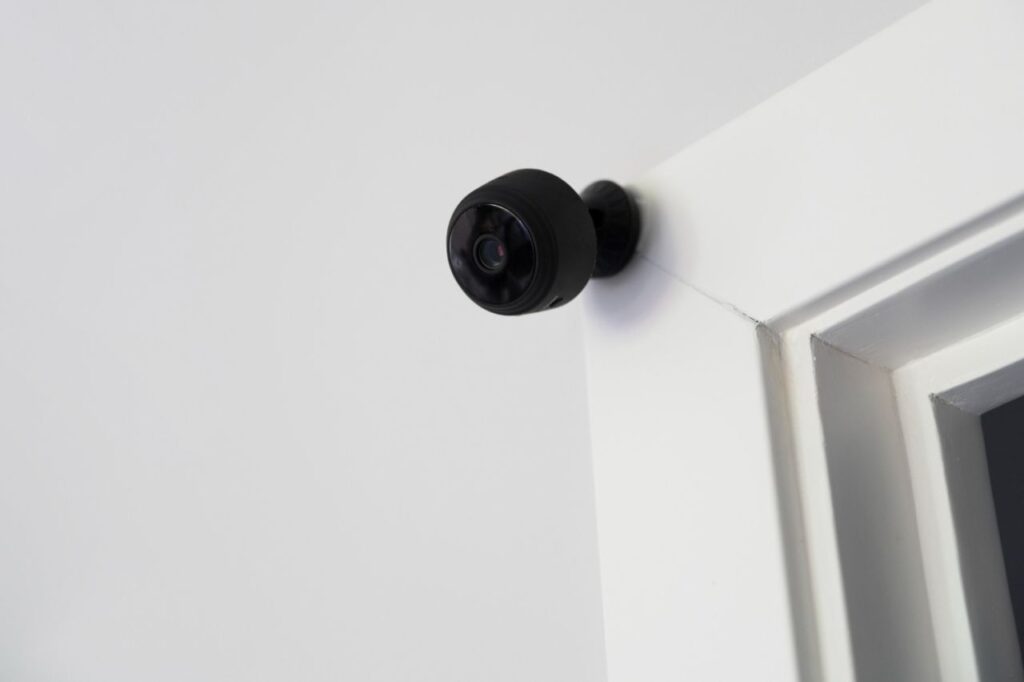
How Does A Home Alarm System Operate?
Home security systems have benefited from rapid technological development over the past decade. Most modern home security systems are wireless and some even double as home automation hubs. As a result, you can expect a higher level of functionality at a lower cost with these systems. In addition, their use has been made much less complicated by the development of touch-screen panels and smartphone technology. This manual will help you learn how security systems work and what they are capable of doing. This article will explain why it is beneficial to incorporate cameras into your home security system, how wired and wireless security systems compare, and which aspects of a security alarm are most important. The role that these tools can play in your future security will also be explored.
In What Ways Do Home Alarm Systems Actually Protect Their Owners?
Your primary goal in setting up a home security system should be to ensure the safety of the people who live there and the belongings they store there. The victim may be hurt in a home invasion, robbery, fire, flood, or other catastrophic event. All of these can be monitored by the majority of home security systems. Various sensors are used in these systems, and they all talk to one main control unit by means of wires, radio waves, or both. The central point then makes contact with the wider world through either a cellular or landline connection. The hub can be a touch screen mounted on the wall, or it can be a small box that sits on a tabletop or in a cabinet.
Your home's sensors are placed in key locations, such as entryways, high-traffic corridors, and ground-floor windows and doors. In addition to potential high-traffic areas, the sensors could be placed anywhere. They can tell if a door or window is opened or closed, if someone is moving around inside, or if there is motion outside. If the system is armed, when a sensor is activated, a notification is sent to the central location. The hub will then sound an audible alarm, contact you (via phone call, text message, or push notification via an app on your mobile device), and, if you have professional monitoring, contact the monitoring centre.
If you pay for professional monitoring, the security firm will keep tabs on the data sent from your system and will try to get in touch with you and the officials if they detect any suspicious activity. Every professionally installed security system needs to be monitored by the same company for at least three years. Most do-it-yourself systems allow you to employ expert monitoring without being locked into a lengthy contract. The vast majority of home security systems currently on the market are wireless and don't need any sort of hardwiring or landline to be installed. Here are some of the most typical components of security alarms and the tasks they perform:
A Central Processing Unit Or Controller
This central part of a security system is what the whole thing revolves around. It uses radio signals to convey information to and from the monitoring centre, as well as with the security sensors already installed in your home. Most have some sort of built-in keypad or other manual control for the alarm system.
Transponder Keys And Keypad
This is an additional set of options for activating and deactivating the system. If your home has more than one outside door, it may be a good idea to invest in additional keypads, which are available for purchase. The majority of these systems have a keypad built into their control centre. Furthermore, if you have a smart wireless system, the alarm can be managed via an app on your smartphone.
Electromechanical Skin Contact Sensors
These small plastic devices are powered by batteries and feature a sensor and a magnet. A door or window sensor, for instance, would be placed on one side of the opening, with the magnet placed on the other. When the door or window is opened, the two points of contact are no longer in close proximity to one another, and the hub receives an alert.
Electromechanical Inertial Measurement Devices
These slightly bulkier plastic, battery-operated devices are typically installed high up to cover areas where people must pass while in your home. Passive infrared is the primary technology used by these; it can detect motion by analysing temperature differences.
Sensing Devices For Broken Glass
A glass-break sensor is an audio detector that can detect sounds of breaking glass from a distance of about 25 feet. If you have a large pet that might trigger your motion sensor, these are a great option to consider. Additionally, a glass-break sensor is a good secondary measure for windows and sliding glass doors because a contact sensor can be bypassed if a burglar smashes a window and then climbs through.
Extremely Loud Alarms
Despite the proliferation of high-tech wireless options for deterring burglars, a traditional alarm that makes a loud noise is still the most effective way to alert you and your neighbours to a potential danger. All home alarm systems have a built-in siren. Most are built right into the control panel, but many can be expanded with an external siren if necessary. Normal decibel levels for these are between 80 and 115.
The Importance Of Using Stickers And Yard Signs
The first line of defence is a set of brightly coloured signs announcing the presence of a home security system. Many would-be burglars, however, will abandon the attempt once they spot them. Professor Joe Kuhns of the University of North Carolina at Charlotte's Department of Criminal Justice and Criminology conducted research. The study's goal was to identify the factors that both encourage and discourage convicted burglars. Whether it's a sign or a clearly visible camera, "the burglars themselves suggested to us that if they saw indications of an alarm system, they would simply go elsewhere," says Kuhns. "Alarm system indicators may take the form of anything from a sign to a clearly visible camera."
Cameras
We spoke with representatives from several different security companies, and they all said that while surveillance cameras are available as an upgrade for most systems, they are not included in the base package. Video doorbell cameras are currently the industry standard. They can either use the preexisting doorbell wiring to connect to your home security system wirelessly or connect wirelessly over Wi-Fi to alert you if they detect motion at your front door. When a package is delivered, some doorbell cameras can even tell you.
Weatherproof cameras designed for use outside are also widely available. These are either plugged into an outdoor socket or run through a wall in order to reach an indoor socket. A power drill will be needed for either of these alternatives. Some outdoor cameras use batteries, while others have integrated solar panels and don't require power at all the time. Despite the fact that indoor cameras are less popular than outdoor cameras due to privacy concerns, they are still included in many home security systems.
Weatherproof cameras designed for use outside are also widely available. These are either plugged into an outdoor socket or run through a wall in order to reach an indoor socket. A power drill will be needed for either of these alternatives. Some outdoor cameras use batteries, while others have integrated solar panels and don't require power at all the time. Despite the fact that indoor cameras are less popular than outdoor cameras due to privacy concerns, they are still included in many home security systems.
Monitors Of The Natural World
By installing smoke, carbon monoxide, heat, water, and temperature sensors, you can safeguard yourself and your home from potential dangers like fire, frozen pipes, and gas poisoning. However, these sensors are not standard on most home security systems. It is also crucial that you decide whether or not you need expert monitoring of the environmental sensors, as some DIY systems do not offer this.
What Is A Smart Alarm System?
Having a smart alarm system allows you to incorporate your sense of security into your regular routine without interrupting your use of modern conveniences like wireless technology, home networks, or mobile phones. You can adjust settings, check in on things, and take care of business with your smart security system from the palm of your hand, no matter where you happen to be. This flexibility includes the use of wireless door sensors and CCTV footage. Essentially, it will put you back in charge of your own safety while making it more straightforward to log in whenever you like.
In What Ways Does A High-Tech Alarm System Help Its Owners?
Smart alarm systems are a good investment for any home or business owner because they increase security, but they also have a number of other advantages.
Price
If you want to use sensors and security systems, only install them where you intend to use them. With less wasteful spending, you can better manage the budget for your home defences.
Efficiency Of Use
You don't have to pay a third party to install your security systems, so you can have them up and running in no time. The fact that everything is synchronised with your mobile device makes accessing and reviewing past data a breeze. You can always know what's going on at home. Your smartphone will serve as a central hub from which you can manage your home's security systems remotely. This ability works no matter where you happen to be.
Conclusion
Protection from intruders, fires, natural disasters, and other hazards like carbon monoxide poisoning is the primary objective of home security systems. Keeping an eye on your home from anywhere in the world is now easy and inexpensive thanks to the Internet of Things. Using an app on your smartphone, you can check in on and adjust your home's security systems from anywhere in the world. In general, a motion detector, door/window sensors, and a hub that communicates with other devices via Zigbee, WiFi, Z-Wave, or a private mesh network make up the foundation of any basic security system. Some setups allow for local storage of video on a solid-state drive or an SD card.
While some solutions offer cloud storage, others supply a dedicated video hard drive for time-lapse and digital video recording (DVR). Many do-it-yourself systems are sold in prefabricated kits that only require basic tools and instructions to assemble. Self-monitoring features are included in some home security systems that you can install yourself. A home security system installation may require a permit from your local authorities. The majority of do-it-yourself security systems only require an initial hardware investment and don't charge any sort of monthly monitoring fee.
However, there is a wide range of additional costs associated with adding monitoring. Through their internet connections, some cameras can communicate with your smart lights, thermostat, and humidity sensors. In order to keep an eye on your property, an outdoor camera is a must-have. Installing outdoor cameras that connect to your home's Wi-Fi network and then to your smartphone is a breeze. In general, video doorbells only require two wires and low voltage for installation.
Add a smart lock to your home automation hub for easy access. Installing a smart lock is easier than ever before thanks to the pre-drilled holes that are a standard size. Try to find one that can capture high-definition (1080p) video and has a large viewing angle (150 to 190 degrees). Smart home security systems are vulnerable to hacking. Signal interference from hackers can render sensors inoperable at the hub.
The current password should be changed to something more secure, such as a long string of letters, numbers, and symbols. Be sure your personal network at home is well protected as well. These days, home alarm systems are wireless and some even serve as hubs for other smart home technologies. These systems make use of a wide range of sensors that communicate with a central hub. The centre can be a tabletop or wall-mounted touch-screen display.
For a period of three years, all security systems must be monitored by the same firm. Most do-it-yourself systems enable expert monitoring without requiring you to sign a long-term contract. Most modern home security systems are wireless and don't necessitate drilling holes in your walls or installing a landline. Alarms that detect broken glass are a practical addition to any glass door or window. The standard now is to have a video camera installed in the doorbell.
Both hardwired and Wi-Fi installations are supported by these systems. After being spotted, many would-be burglars give up on an attempt. There are also many options for purchasing weatherproof cameras that can be used outside. These can be plugged into a wall outlet inside, or they can be run through a wall to an outdoor outlet. Both battery-operated and solar-powered outdoor cameras are available, with the latter being particularly useful for extended periods of time.
Thanks to your smart alarm system, you can feel safe while going about your daily activities. Your smart security system puts the power to make changes, monitor activity, and take care of business in the palm of your hand. Incorporating wireless door sensors and closed-circuit television footage falls under this category of adaptability.
Content Summary
- A smart home security system combines hardware and software to help deter burglaries.
- These days, homeowners can choose from a wide range of high-tech home security systems, from DIY kits to fully-fledged systems with professional monitoring and installation.
- Let's say for the sake of argument that you aren't ready to invest in a top-notch security system just yet.
- You'll need to have this information on hand when deciding how and where to keep your home monitored and secure while you're away.
- With a smart home security system that communicates over Wi-Fi, you can check in on your home's protection measures from anywhere in the world using an app on your smartphone.
- A motion detector, some door/window sensors, and a hub that communicates with the other devices via Zigbee, WiFi, Z-Wave, or a private mesh network are the standard components of an entry-level security system.
- First, a brief discussion of wireless protocols: In an ideal home security setup, all of the components communicate with the main control panel via the same radio frequency.
- Also, a hub is needed for Z-Wave and Zigbee devices to talk to one another and be managed, while Wi-Fi devices can connect directly to a home network and be managed through an app.
- As a conclusion, Z-Wave and Zigbee devices are more secure than Wi-Fi ones because they function in a closed system with a dedicated hub and make use of AES 128 encryption.
- An efficient intelligent security system will offer interoperable parts that function in a unified framework and are subject to user-specific rules of operation.
- Some systems may only offer cloud storage, while others may also allow for local storage of recorded video on a solid-state drive or SD card. You can watch videos on your device's internal storage.
- The subscription package you choose will determine how much you'll pay annually to keep your recorded videos accessible in the cloud.
- While some solutions offer cloud storage, others supply a dedicated video hard drive for time-lapse and digital video recording (DVR).
- As of now, every single security system we've tested has an accompanying app that transforms your phone into a command centre, allowing you to do things like arm and disarm the system, programme ordinance, add and remove components, and receive alerts whenever the alarm goes off.
- The vast majority of apps also let you lock and unlock doors, change the temperature, watch recorded and live video, and disable alarms.
- Now there are apps that will automatically lock and unlock your doors whenever your phone detects that you have entered or left a predefined area.
- A communications hub mounted on the wall with a touch-screen display that allows you to perform all of the app's functions is typically included in more expensive systems.
- When an alarm is set off, you can use the screen to communicate with a trained monitoring system and view live footage from any security cameras.
- Doing the installation of the security system yourself can save you a lot of money in the long run, both in terms of the initial investment and the cost of regular maintenance and monitoring.
- What's more, some do-it-yourself security systems can double as monitors. If you go with professional installation, someone will come to your house, set everything up, and show you how to operate it.
- This is just one of many reasons why it's best to have a professional handle the installation instead of trying it yourself. Bear in mind that in some communities, securing a permit before installing a home security system is obligatory.
- Your home's security system can be disarmed and rearmed, doors unlocked, temperatures adjusted, and garage doors opened with just the sound of your voice and a smart speaker.
- There will be a monthly or annual monitoring fee regardless of whether you hire a professional to install your system or do it yourself. In some cases, a monthly charge may be required to defray the expense of the underlying hardware.
- Self-monitoring your security with either the Safe Home Security Kit or the Ring Alarm Security Kit requires only an initial hardware investment and no monthly monitoring fees.
- The monthly monitoring fee for professionally installed systems is typically higher than the fee for self-installed systems. A security camera is a more cost-effective option than installing a full security system in a small apartment where you want to keep an eye on things while you're away.
- If you want to keep an eye on things when you can't be there in person, this is a great way to do it. If money is tight, look for a camera that records video to an SD card and records in response to motion or sound.
- Having an outdoor camera to keep an eye on your property is a great idea. Outdoor cameras are just as simple to set up as their indoor counterparts, and both can send live footage to a smartphone over the home's Wi-Fi network.
- Connectivity to other smart home devices, such as door openers, sirens, and light switches, is another feature to look for in an outdoor camera.
- By pressing a button on your doorbell, you can easily see who is knocking. These gadgets will sound an alarm and connect to your Wi-Fi when they detect someone in close proximity to your doorbell.
- Low-voltage, two-wire doorbell wiring is typically already in place, making installation of most video doorbells simple. On the other hand, there are battery-operated variants that make set up a breeze.
- In addition to recording in 1080p high definition, your chosen model should have a wide field of view (150 to 190 degrees), night vision of up to 30 feet, and an affordable cloud storage option for your footage.
- A device that employs pre-buffering to store data is required to record the time before an event triggers a sensor, such as a motion detector or a doorbell being pressed.
- A smart lock can improve your home's security without breaking the bank, but they are typically sold as part of a larger package that includes other high-tech measures.
- Adding a Zigbee or Z-Wave smart lock to a home automation hub that also controls the lights and thermostat is a breeze.
- Keep an eye out for features such as geofencing, which locks and unlocks the door based on your phone's location services, voice activation via Siri (HomeKit), Google Assistant, or Amazon Alexa, and integration with other smart home devices such as smoke alarms, video doorbells, thermostats, outdoor cameras, and connected lighting.
- There are a wide variety of smart locks available now, including those that use a combination of keys, touch screens, touchpads, keys, or even fingerprint readers.
- Hackers can access and take control of anything connected to the internet via wireless technology. Some smart home security systems are easy targets for hackers due to a lack of encryption.
- Surveillance cameras and smart locks are just two examples of the kinds of wirelessly connected devices that can provide hackers with a foothold in a private network. The devices may be vulnerable to hacking. You can take precautions to prevent hackers from breaching your home security system.
- Be sure your personal network at home is well protected as well. Updates to the firmware fix security holes and bolster the system's resistance to intrusion.
- Rapid technological advancement over the past decade has benefited home security systems. Today, home security systems are increasingly mobile and wireless, with some serving as central automation hubs as well.
- This means that these systems will provide a greater level of functionality at a lower cost. You can use the information in this guide to better understand how security systems function and the tasks they can perform.
- This article will discuss the advantages of installing cameras as part of your home security system, the differences between wired and wireless alarms, and the most crucial features to look for in a security system.
- Furthermore, we will discuss how these methods may contribute to your safety in the long run. Most home alarm systems will be able to keep tabs on all of these.
- All of the windows and doors on the first floor, as well as any entryways, are equipped with sensors to monitor the activity in and around your home.
- After that, the hub will sound an audible alarm, get in touch with you (via phone call, text message, or push notification via an app on your mobile device), and, if you have professional monitoring, get in touch with the monitoring centre.
- For a monthly fee, a security firm will monitor the information transmitted by your system, making attempts to contact you and the appropriate authorities if they notice anything out of the ordinary.
- For a minimum of three years after a professional installation, the monitoring services for any security system must be provided by the same firm. Most do-it-yourself systems enable expert monitoring without requiring you to sign a long-term contract.
- Most home alarm systems available today are wireless and don't require a landline or hardwiring to operate.
- It communicates with the monitoring centre and the security sensors already set up in your home via radio signals.
- The majority of alarm systems come with a keypad or other manual control that is built right into the device. The majority of these systems' command centres feature a keypad for user input.
- In addition, if you have a sophisticated wireless system, you can control the alarm from an app on your mobile device. The sound of shattering glass can be picked up by a glass-break sensor located up to 25 feet away.
- Because a contact sensor can be circumvented if a burglar smashes a window and then climbs through, a glass-break sensor is a good secondary measure for windows and sliding glass doors.
- A traditional alarm that makes a loud noise is still the most effective way to alert you and your neighbours to a potential danger, despite the proliferation of high-tech wireless options for deterring burglars.
- A siren is an integral part of any home alarm system. Joe Kuhns, a professor in the Department of Criminal Justice and Criminology at UNC Charlotte, conducted the study.
- The purpose of the research was to establish elements that inspire and dissuade repeat offenders to commit burglaries. "The burglars themselves suggested to us that if they saw indications of an alarm system, they would simply go elsewhere," says Kuhns, whether that be a sign or a clearly visible camera. Indicators for alarm systems can be anything from a sign to a blatantly placed camera. The standard now is to have a video camera installed in the doorbell.
- If they detect motion at your front door, they can send you a signal either through the existing doorbell wiring or through your home's Wi-Fi network.
- There are also many options for purchasing weatherproof cameras that can be used outside. These can be plugged into a wall outlet inside, or they can be run through a wall to an outdoor outlet.
- Both of these options require the use of a power drill. Both battery-operated and solar-powered outdoor cameras are available, with the latter being particularly useful for extended periods of time.
- Indoor cameras are included in many home security systems despite the fact that they are less popular than outdoor cameras due to privacy concerns.
- You can protect yourself and your home from fire, frozen pipes, and gas poisoning by installing smoke, carbon monoxide, heat, water, and temperature sensors.
- However, most home security systems do not come equipped with such sensors. Also, some do-it-yourself systems don't include expert monitoring of the environmental sensors, so you'll want to weigh that against the benefits of installing them yourself.
- Modern conveniences like wireless technology, home networks, and mobile phones shouldn't get in the way of feeling safe, and a smart alarm system makes it possible to do just that.
- Your smart security system can be managed from the convenience of your hand and from any location.
- Incorporating wireless door sensors and closed-circuit television footage falls under this category of adaptability. Sensors and other security systems should be set up only in the areas where they will actually be needed. You can control all of your home's security features from anywhere in the world using only your smartphone.


